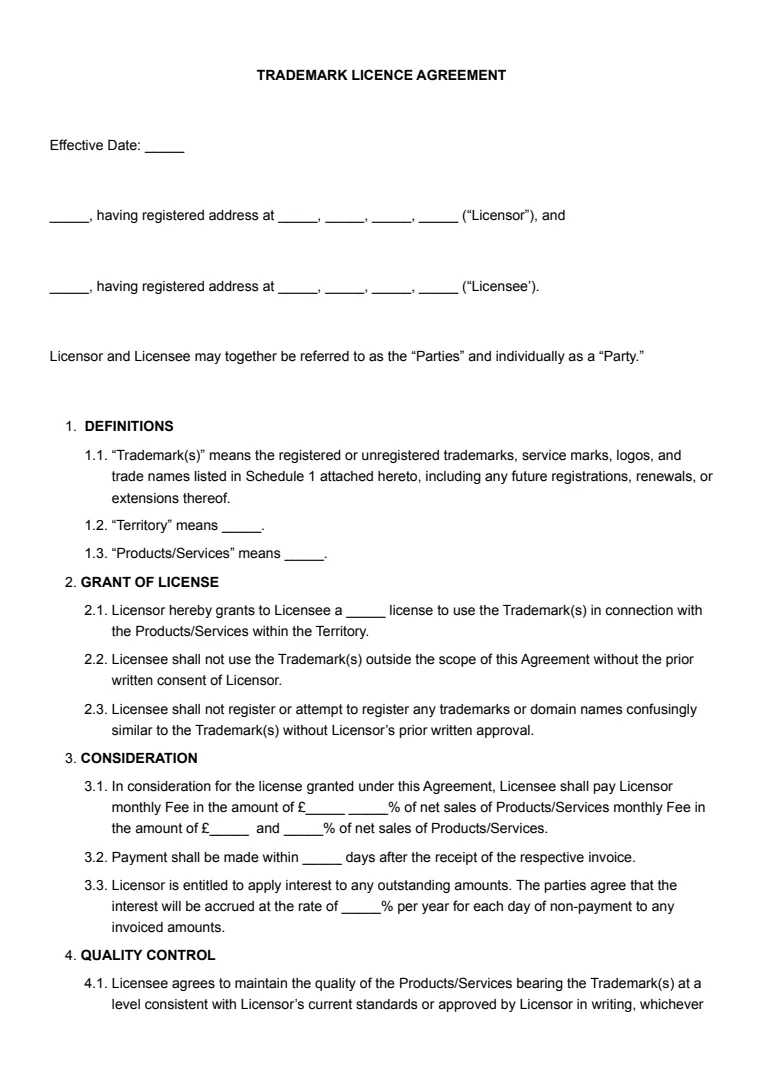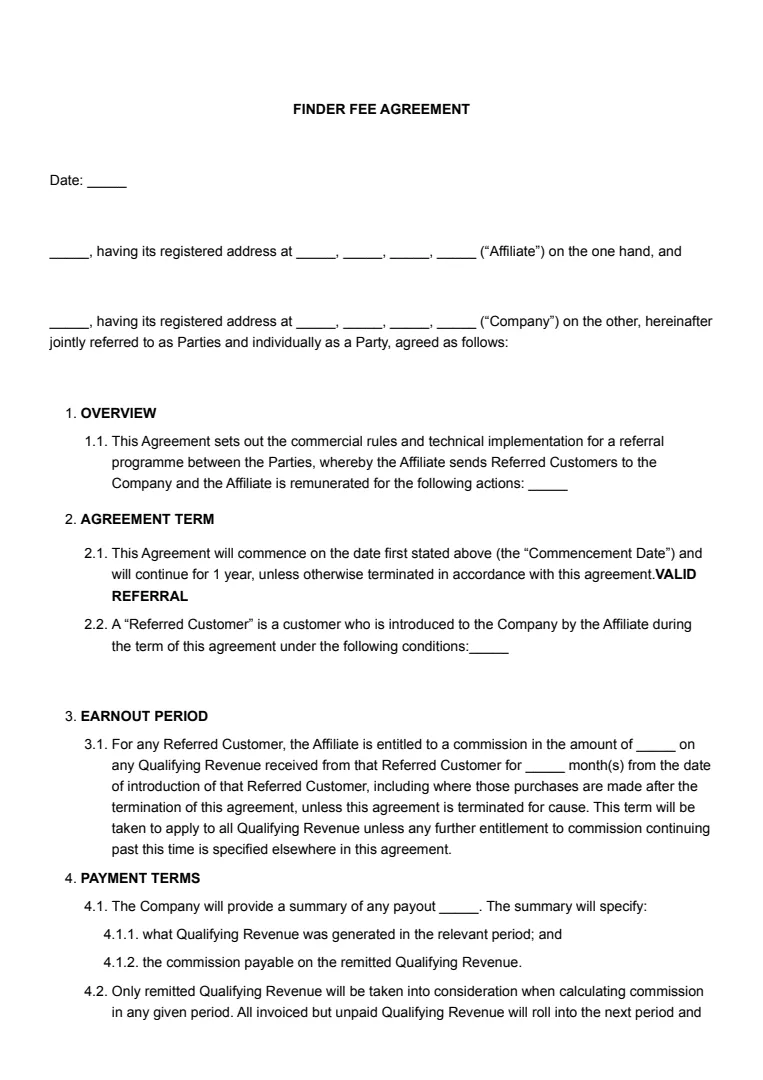What Is an Influencer Contract?
An influencer contract, sometimes referred to as an influencer agreement template or influencer contract template, is a legally binding document between a brand and an influencer that governs their working relationship.
It goes beyond simply stating “create content for payment” and instead specifies the scope of work, timelines, payment terms, content usage rights, compliance requirements, and dispute resolution processes.
In the UK, influencer contracts must comply with contract law as well as specific regulations. These include the Consumer Protection from Unfair Trading Regulations 2008, which prohibit misleading promotions; the CAP Code, enforced by the Advertising Standards Authority, which mandates clear disclosures such as #ad or “paid partnership”; and the UK GDPR for handling personal data.
Having a clear contract is crucial because it reduces ambiguity, sets measurable expectations, and creates a legal safeguard if disagreements arise.
When Should You Use an Influencer Contract?
An influencer contract should be used in the following instances or circumstances.
1. Paid Collaborations
Whenever there is any form of compensation, whether monetary payment, complimentary products, or services, an influencer contract is essential because it transforms informal agreements into enforceable obligations. A well‑drafted contract prevents disputes over the value of the exchange, specifies exactly what deliverables the brand is paying for, and clarifies ownership of the resulting content.
It can also set expectations for campaign performance metrics, approval processes, and required disclosures in line with the CAP Code. Without these terms, brands risk paying for content that is late, off‑brand, or fails to meet advertising standards.
Expert Tip:
“Even when products are gifted without payment, UK consumer law can still treat the arrangement as a commercial partnership. Always use a written agreement to define deliverables and ensure required advertising disclosures are made.”
2. Long‑Term Partnerships
When the collaboration extends over several weeks or months, the contract should go beyond basic deliverables and address the operational framework for the relationship. This includes content calendars, review and feedback cycles, processes for creative sign‑off, and key milestones.
Long‑term partnerships also benefit from provisions that anticipate changes over time, such as campaign pivots, seasonal product launches, or evolving brand guidelines. Including renewal or extension clauses can avoid the need to renegotiate from scratch if both parties wish to continue the arrangement. For influencers, these clauses offer stability; for brands, they ensure consistent messaging over multiple campaign phases.
3. High‑Value Campaigns
If the campaign involves substantial financial investment, premium product launches, or strategic partnerships, the stakes are higher. The influencer contract in these cases should include comprehensive exclusivity clauses to prevent the influencer from promoting competitor brands during the campaign or within a defined “cooling off” period afterwards.
Detailed content usage rights become particularly important, as brands often want to repurpose influencer content for ads, press materials, or retail displays. Additionally, indemnity provisions can protect the brand if the influencer’s content or conduct causes reputational or legal harm. Without these protections, a single misstep could undermine an entire campaign.
4. Regulated Products or Contests
Collaborations involving regulated industries, such as alcohol, healthcare, finance, gambling, or cosmetics, or promotional activities like giveaways, require heightened compliance. The contract should outline any mandatory age restrictions, geographic targeting rules, health disclaimers, or financial risk warnings.
For example, promoting alcohol may require adherence to the Portman Group Code of Practice in the UK, while financial promotions must comply with the Financial Conduct Authority (FCA) guidelines. In prize draws or contests, the agreement should specify how winners will be selected, how personal data will be handled under the UK GDPR, and which party is responsible for fulfilling prizes.
By including these details upfront, brands and influencers reduce the risk of regulatory fines, audience backlash, or campaign takedowns by platform moderators.
How to Write an Influencer Agreement
You can follow this step-by-step guide to creating your own influencer agreement.
Step 1: Identify the Parties
Accurately identifying the contracting parties is the foundation of a valid influencer agreement. Use the influencer’s full legal name or their registered business name, along with their address, business registration number, and tax identification number if applicable. For companies, include the registered office address and company number.
It’s also important to specify whether the influencer is acting in a personal capacity or through a limited company, as this can impact tax obligations, liability exposure, and intellectual property ownership. For example, if the influencer operates through a business entity, the contract should be signed by an authorised representative, not just the influencer personally.
Step 2: Define Deliverables
Deliverables should be described in clear, measurable terms that remove ambiguity. This means specifying the exact type of content (video, image carousel, livestream), the number of posts, the intended platform, deadlines, and any creative elements that must be included, such as brand tags, hashtags, or product placement guidelines.
Instead of general statements like “post about the product,” use precise instructions such as: “Three 60‑second TikTok videos and four Instagram Stories within 14 days of receiving the product, featuring the hashtag #brandname and linking to the client’s website.” This level of clarity prevents disagreements over whether obligations have been met and ensures alignment with the campaign’s marketing objectives.
Expert Tip:
“The more specific your deliverables section, the easier it is to enforce. Include measurable criteria such as minimum video length, number of shots, or required calls‑to‑action to avoid disputes over quality or completeness.”
Step 3: Set Payment Terms
Clearly outline the agreed fees, the currency in which payment will be made, and the payment schedule. If milestone payments are used, link each instalment to specific deliverables or campaign stages. Specify the payment method (e.g., bank transfer, PayPal) and whether VAT applies.
Consider including terms to protect against late payment, such as referencing the Late Payment of Commercial Debts (Interest) Act 1998, which allows businesses to charge interest and recovery costs on overdue invoices. This not only safeguards the influencer’s income but also incentivises the brand to pay promptly.
Step 4: Include Usage Rights
Usage rights define how, where, and for how long the brand can use the influencer’s content. State whether the brand’s rights are limited to reposting on social media or extend to paid advertising, website use, print marketing, or third‑party distribution.
Be specific about territories (e.g., UK only, global rights) and duration (e.g., three months, perpetuity). If extended usage is required, outline any additional fees. This protects the influencer from losing control over their content while giving the brand the certainty it needs for campaign planning.
Expert Tip:
“Usage rights are one of the most common sources of dispute. If you want the freedom to reuse influencer content in future campaigns, agree to this in writing and budget for additional licensing fees if necessary.”
Step 5: Add Termination Clauses
Termination clauses protect both parties by setting out when and how the agreement can be ended early. Common triggers include failure to meet deadlines, breach of compliance rules, reputational harm caused by either party, or force majeure events.
Specify the required notice period and how payments will be handled if the contract is terminated before completion. For example, the brand may be liable for work completed to date, while the influencer must return unused advance payments. These clauses are essential for managing risk if the relationship breaks down.
Step 6: Ensure compliance clauses
Compliance clauses make sure the influencer adheres to relevant legal and regulatory standards. In the UK, this typically means following the CAP Code and guidance from the Advertising Standards Authority on clear labelling of sponsored content.
If the influencer is promoting regulated products, such as alcohol, financial services, or healthcare items, the agreement should also reference any sector‑specific laws. Including these clauses reduces the risk of regulatory penalties, reputational damage, and campaign takedowns by platforms.
Legally.io’s document generator can create influencer agreements tailored to campaign requirements and relevant jurisdictional rules, ensuring no important provisions are missed.
What Should an Influencer Contract Contain?
A well‑structured influencer contract should include:
- Parties’ details – Full names, addresses, and company registration numbers.
- Scope of work – Specific deliverables, timelines, and creative requirements.
- Compensation – Detailed payment schedule, methods, and any expense reimbursement rules.
- Usage rights – Who owns the content, how it can be used, and for how long.
- Exclusivity – Restrictions on promoting competing brands during and after the campaign.
- Compliance obligations – Clear rules on disclosures, content guidelines, and sector‑specific regulations.
- Termination clauses – How the contract can end and the consequences of early termination.
- Confidentiality – Protection of sensitive business information and trade secrets.
- Liability limitations – Caps on damages, while respecting UK legal requirements.
Each of these sections ensures that both sides understand their obligations, rights, and remedies, reducing the risk of disputes.
Legal Tips for Influencer Contracts
Here are some helpful legal tips to bear in mind regarding influencer contracts:
- Be explicit with deliverables - Define content types, posting frequency, deadlines, and creative requirements in detail. Avoid vague language that leaves room for interpretation. This prevents scope creep and makes it easier to enforce the agreement if disputes arise.
- Reference relevant regulations - In the UK, always cite the CAP Code and Advertising Standards Authority guidelines for advertising disclosures. If personal data is collected or processed, ensure compliance with the UK GDPR.
- Include a morality clause - Give the brand the contractual right to terminate if the influencer’s behaviour, online or offline, could harm brand reputation. This is especially important for high‑profile campaigns where public perception is crucial.
- Clarify intellectual property rights - State whether the influencer retains ownership of the content with a licence to the brand, or transfers ownership entirely. Define how the content can be reused, the duration of usage rights, and whether additional fees apply for extended use.
- Add data protection provisions - Detail the security measures for handling personal data, specify how long it will be retained, and allocate responsibilities if a breach occurs. This helps both parties comply with privacy laws and avoid costly enforcement actions.
Expert Tip:
“Influencer campaigns often involve collecting personal data for giveaways or tracking engagement. Ensure your contract sets out clear GDPR responsibilities, including who acts as data controller and how data subjects can exercise their rights.”
Key takeaways
An influencer contract is not just a formality; it is a legal safeguard and a tool for managing brand‑influencer relationships effectively.
By setting clear deliverables, timelines, payment terms, and compliance rules, both parties can work confidently toward a shared campaign goal.
Using a well‑designed, legally compliant agreement ensures protection against disputes, aligns with advertising laws, and supports long‑term collaboration.
Legally.io provides tailored templates that help brands and influencers create agreements that meet industry standards and legal requirements.














